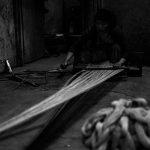When working with hot glue, it's essential to know which fabrics can dissolve it. Understanding the properties of polyester, acetate, rayon, nylon, and silk is crucial for mastering the art of working with hot glue.
These fabrics have the potential to react with hot glue, causing it to dissolve and potentially compromising your project. By being aware of these materials, you can ensure that your hot glue projects remain secure and long-lasting.
Key Takeaways
- Polyester is a fabric that can dissolve hot glue with acetone-based nail polish remover, but it's important to test a small area first to avoid damage.
- Acetate requires low-temperature hot glue or fabric glue for delicate materials, and removing hot glue should be done with patience and gentle techniques.
- Rayon can withstand moderate heat but may require cooling agents and solvents to remove stubborn hot glue residues.
- Nylon is generally compatible with hot glue and can be used for various applications without any issues.
Polyester
You can dissolve hot glue on polyester fabric with the use of an acetone-based nail polish remover. Polyester is a synthetic fabric known for its durability, wrinkle resistance, and easy-care properties. When it comes to application techniques, polyester is often utilized in clothing, upholstery, and various household items due to its ability to retain its shape and color, even after multiple washes. Its strong fibers make it resistant to stretching and shrinking, making it an ideal choice for garments and home decor.
Polyester's properties make it a versatile and practical choice for many projects, but when dealing with hot glue mishaps, it's important to know how to remove it without damaging the fabric. The acetone in nail polish remover works to break down the hot glue, allowing it to be gently lifted from the polyester fibers. It's essential to test a small, inconspicuous area of the fabric first to ensure the acetone doesn't cause any discoloration or damage.
Once confirmed, carefully apply the acetone-based nail polish remover to the affected area with a cotton ball or swab, then gently scrape off the softened hot glue with a blunt edge. Always remember to follow up with a gentle wash to remove any residue.
Acetate
Acetate fabric can also be a challenge when it comes to removing hot glue mishaps, and it requires a different approach for successful removal. Acetate, known for its luxurious appearance, is a synthetic fiber derived from cellulose or wood pulp. When it comes to crafting, acetate is often used in making ribbons, trimmings, and linings due to its lightweight and smooth texture.
However, when hot glue gets on acetate fabric, it can be tricky to remove without causing damage. Here are some considerations for dealing with hot glue on acetate:
- Acetate properties:
- Understand that acetate fabric is heat-sensitive and can melt or shrink when exposed to high temperatures.
- Be cautious with acetate, as it isn't as forgiving as some other fabrics when it comes to hot glue mishaps.
- Acetate crafting techniques:
- Use low-temperature hot glue or fabric glue specifically designed for delicate materials like acetate.
- Consider using a small amount of acetone or nail polish remover on a cotton swab to carefully dab at the hot glue, but test in an inconspicuous area first to ensure it won't damage the fabric.
When dealing with acetate fabric and hot glue, patience and gentle techniques are key to successful removal without causing damage.
Rayon
When dealing with rayon fabric and hot glue, it's important to carefully consider its properties and crafting techniques to ensure successful removal without causing damage.
Rayon is a semi-synthetic fabric known for its smooth texture, excellent drape, and high absorbency. These properties make it a popular choice for various crafts and garments. However, when using hot glue with rayon, it's essential to be mindful of its heat sensitivity. Rayon can withstand moderate heat, but prolonged exposure to high temperatures may cause the fabric to weaken or melt.
In terms of hot glue compatibility, rayon generally handles hot glue well, but it's crucial to apply the adhesive with care to prevent any accidental spills or excess spreading. When removing hot glue from rayon, it's best to let the glue cool and harden before attempting to gently peel or scrape it off. Using a cooling agent, like ice, can expedite this process without causing damage to the fabric. Additionally, avoiding direct heat and opting for solvents that are safe for rayon can help in successfully dissolving any stubborn hot glue residues.
Understanding these properties and crafting techniques will ensure that your rayon projects remain intact and beautiful.
Nylon
Nylon, like rayon, is another fabric that's frequently used in crafting and garment making. When it comes to nylon fabric properties, it's known for being strong, durable, and resistant to abrasion, making it an excellent choice for items that undergo a lot of wear and tear. Additionally, nylon is moisture-wicking and quick-drying, making it suitable for activewear and outdoor gear.
As for nylon fabric uses, it's commonly found in items such as stockings, parachutes, ropes, and even guitar strings.
- Properties of Nylon Fabric
- Strong and durable
- Resistant to abrasion
- Moisture-wicking and quick-drying
- Uses of Nylon Fabric
- Stockings
- Parachutes
- Ropes
- Guitar strings
Nylon's versatility makes it a popular choice for various applications. Whether you're crafting outdoor gear, sewing activewear, or creating intricate garments, nylon's unique properties make it a dependable fabric to work with.
Silk
Durable and versatile, silk is a luxurious fabric known for its smooth texture and lustrous appearance, making it a popular choice for elegant garments and delicate crafts. When crafting with silk, it's important to be aware of its unique properties and how they interact with hot glue.
Silk has natural proteins that give it a beautiful sheen and a soft feel. However, these proteins can be sensitive to heat and chemicals, so using hot glue on silk requires some caution. The good news is that hot glue is generally compatible with silk, as long as it's used carefully.
When working with silk, it's essential to pay attention to the heat of the hot glue and avoid applying it directly onto the fabric. Instead, apply the hot glue to the trim, embellishments, or other materials you want to attach to the silk. This helps prevent any damage to the delicate fabric.
Additionally, if you ever need to remove hot glue from silk, be very gentle to avoid causing any harm. You can use a small amount of rubbing alcohol on a cotton swab to carefully dab at the glue until it dissolves and then gently wipe it away. Always test a small, inconspicuous area first to ensure the silk isn't negatively impacted.
Frequently Asked Questions
Can These Fabrics Dissolve Hot Glue in a Specific Temperature Range?
In a specific temperature range, certain fabrics can dissolve hot glue. It's important to consider fabric compatibility when using hot glue to avoid any unwanted effects. Always check the recommended temperature range for your fabric.
Are There Any Safety Precautions to Take When Using Hot Glue With These Fabrics?
When using hot glue with different fabrics, it's crucial to consider safety precautions and fabric compatibility. Precautionary measures include wearing gloves and working in a well-ventilated area. Additionally, be mindful of fabric care instructions.
Can These Fabrics Be Easily Washed After Hot Glue Has Been Dissolved?
After dissolving hot glue from fabrics, follow washing instructions carefully to ensure fabric care. Use gentle detergent and avoid high heat to preserve the fabric's integrity. Always air dry to maintain the fabric's quality.
Are There Any Alternative Methods for Removing Hot Glue From These Fabrics?
Looking for alternative methods to remove hot glue from fabrics? Consider using a hairdryer on a low heat setting to soften the glue, then gently peel it off. This method is effective and safe.
Will Dissolving Hot Glue Affect the Color or Texture of These Fabrics?
When dissolving hot glue, it can potentially affect the color and texture of fabrics. The chemical reaction between the glue and the fabric may cause discoloration and alteration of the material's texture. Be cautious.
- How to Fix a Tear in a Gore-Tex Jacket - July 2, 2025
- How to Wash a Patagonia Gore-Tex Jacket - July 2, 2025
- What Is a Gore-Tex Jacket and How Is It Different? - July 2, 2025







